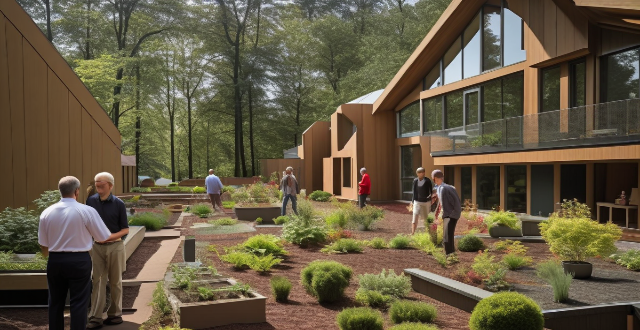Energy-efficient buildings offer numerous benefits, including environmental advantages like reduced greenhouse gas emissions and conservation of natural resources, economic savings such as lower energy bills and increased property value, health improvements through better indoor comfort and air quality, and social effects like job creation and community standards. These buildings are a smart investment that provide long-term savings and promote a greener planet.

Benefits of Energy-Efficient Buildings
Energy-efficient buildings offer a multitude of benefits that range from environmental advantages to economic savings. Let's delve into the key advantages:
Environmental Impact
1. Reduced Greenhouse Gas Emissions: Energy-efficient buildings significantly reduce the emission of greenhouse gases (GHGs) by using less energy for heating, cooling, and lighting. This helps in mitigating climate change.
2. Conservation of Natural Resources: By utilizing renewable energy sources and efficient designs, these buildings help conserve natural resources like water and fossil fuels.
3. Improved Air Quality: With better ventilation systems and reduced emissions, the air quality inside and outside energy-efficient buildings is improved, leading to healthier living environments.
4. Waste Reduction: These buildings often incorporate recycling and waste reduction strategies, reducing landfill waste and promoting sustainability.
Economic Benefits
1. Lower Energy Bills: One of the most immediate benefits is reduced energy consumption, which translates into lower utility bills for the building’s occupants.
2. Increased Property Value: Energy-efficient buildings are increasingly sought after for their long-term cost savings, making them more valuable in the real estate market.
3. Operational Cost Savings: Maintenance costs are typically lower due to the use of high-quality, durable materials and efficient systems that require less upkeep.
4. Tax Incentives and Grants: Many governments offer tax incentives, rebates, or grants for constructing or retrofitting buildings to be more energy-efficient.
Health and Well-being
1. Improved Indoor Comfort: Advanced insulation and ventilation systems provide better temperature control and air quality, enhancing comfort levels for occupants.
2. Better Lighting: The use of daylighting strategies and efficient lighting systems reduces glare and eyestrain, creating a more pleasant and productive environment.
3. Noise Reduction: Energy-efficient buildings often have superior soundproofing, which can lead to fewer noise distractions and a quieter interior environment.
4. Healthier Living Conditions: With better air quality and controlled humidity, there is a reduced risk of mold growth and respiratory issues among inhabitants.
Social and Community Effects
1. Job Creation: The construction and maintenance of energy-efficient buildings generate jobs in various sectors such as construction, engineering, and technology.
2. Educational Opportunities: These buildings serve as educational tools for sustainable design and energy conservation, raising awareness and inspiring further action.
3. Community Standards: As more energy-efficient buildings are constructed, they set new standards for sustainability within the community, encouraging others to follow suit.
In summary, energy-efficient buildings not only contribute positively to the environment but also provide substantial economic benefits, enhance the health and well-being of occupants, and stimulate social development at the community level. They represent a smart investment in our future by offering long-term savings while promoting a greener planet.